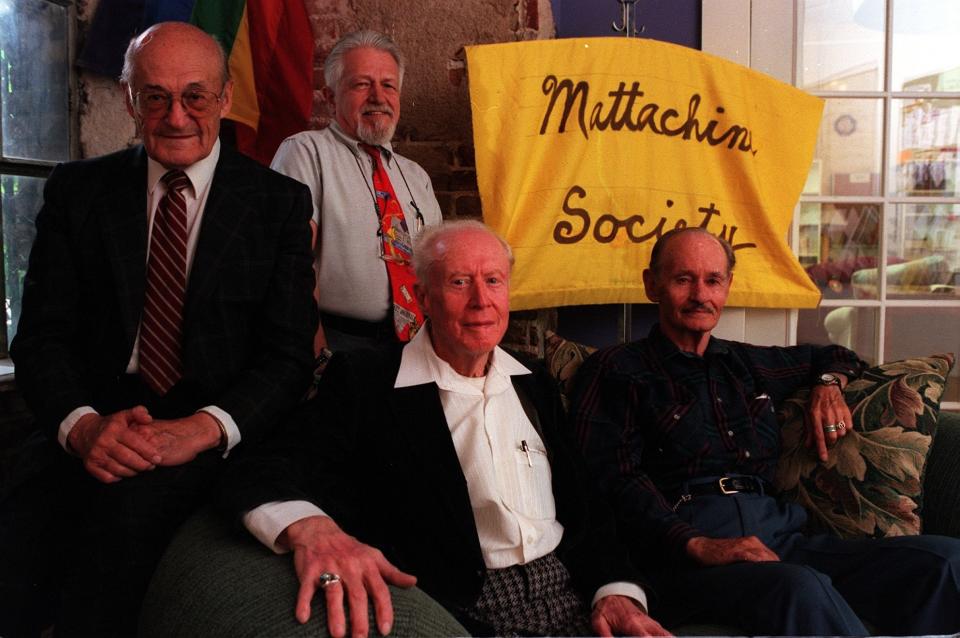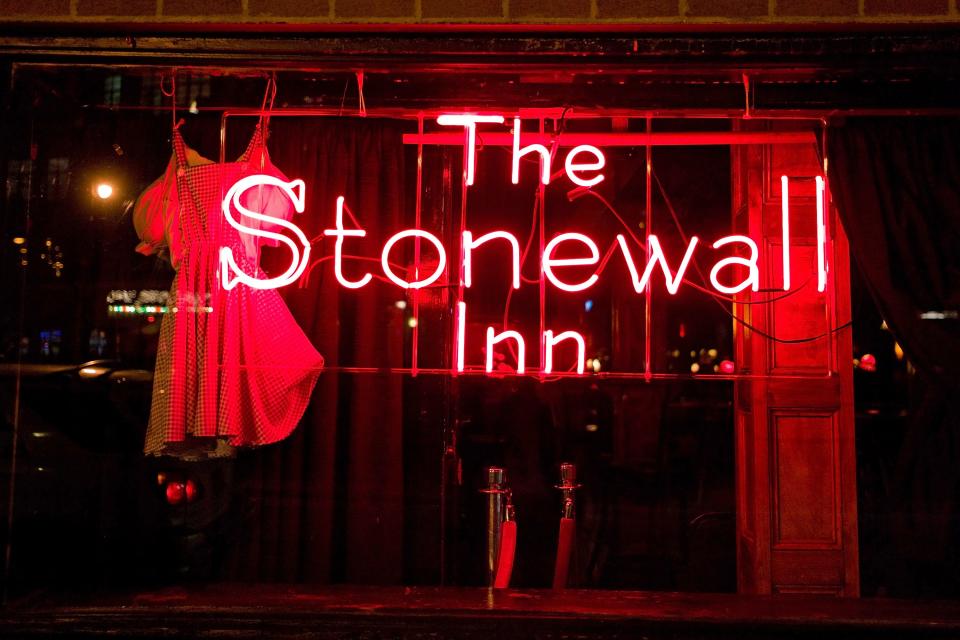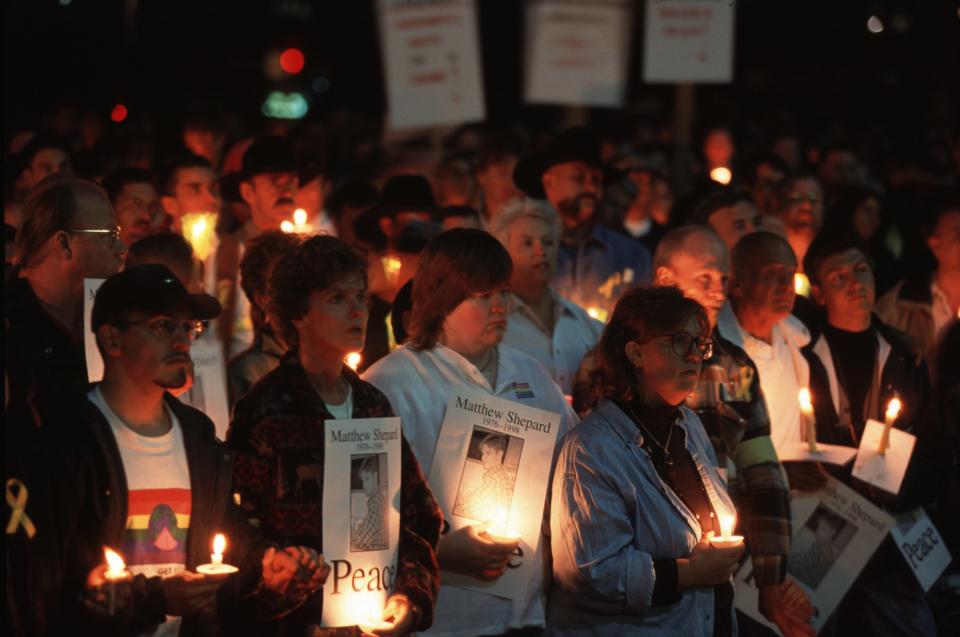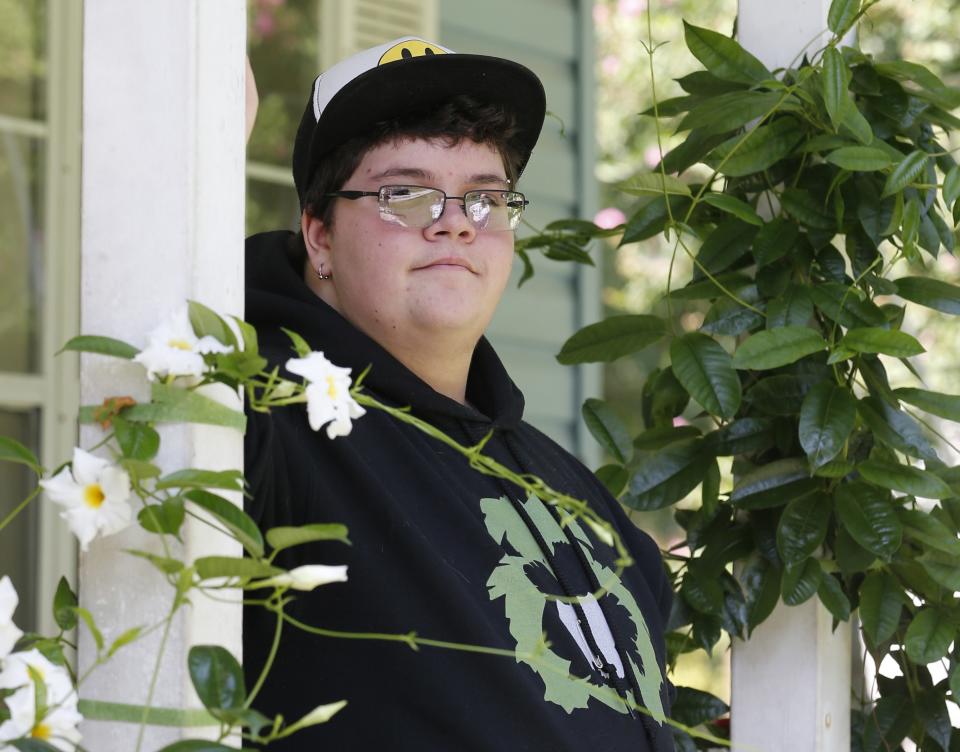20 Historic Moments in the Fight for LGBTQ Rights
As we celebrate this year's Pride Month throughout the country, many of us are focused on the current issues that face the LGBTQ community, and what we can do moving forward to fix them. And while it’s hugely important to keep moving forward, it’s also important to look back, and see how far we’ve come. So, before you head out to the next Pride parade, take a look at some of the most major moments in our country’s history that have strongly propelled the LGBTQ rights movement forward.
1924: The first gay rights group is established.
World War I veteran Henry Gerber founded the Society for Human Rights in Chicago. The group was the first gay rights group in America, and its newsletter, “Friendship and Freedom,” was the United States’ first recorded gay rights publication.
January, 1958: The Supreme Court rules in favor of gay rights.
After the U.S. Post Office refused to deliver America’s first widely distributed pro-gay publication, ONE: The Homosexual Magazine, the case went to the U.S. Supreme Court — and the court ruled in favor of gay rights for the first time, making it a major landmark case in LGBTQ history.
April 21, 1966: The Mattachine Society organizes a gay rights “Sip-In.”
During a time when most bars refused to serve gay people, the Mattachine Society, one of the country’s first gay rights organizations, staged a “Sip-In,” during which activists entered a New York City bar, announced they were gay, ordered drinks, and waited to be served.

June 28, 1969: The Stonewall riots spark the beginning of the LGBT movement.
In the early morning hours on June 28, 1969, police performed a raid of the Stonewall Inn, a New York City gay bar — and the customers and their supporters took a stand. The event turned into a violent protest and led to a days-long series of riots. Those “Stonewall riots” are largely considered the start of the LGBTQ civil rights movement in the United States.

1973: Homosexuality is no longer declared a mental illness.
After years of studies, analysis, and changing cultural attitudes, the American Psychiatric Association’s board of directors removed homosexuality from the official list of mental illnesses, known as the Diagnostic and Statistical Manual of Mental Disorders, a move that was upheld with a vote by the association’s membership.
1987: Barney Frank becomes second openly gay member of Congress.
After spending six years on Capitol Hill, Rep. Barney Frank (D-Mass.), voluntarily came out as gay, making him the second openly gay member of congress, and the first to come out voluntarily, in the country’s history.
April, 2000: Vermont takes a huge step toward same-sex marriage legalization.
Vermont became the first state in the country to give same-sex couples the right to enter into civil unions — legal partnerships which would grant those couples the same rights and benefits as those in legal marriages.
October, 2009: The Matthew Shepard & James Byrd Jr. Hate Crimes Prevention Act becomes a law.
President Obama signed the Matthew Shepard and James Byrd, Jr. Hate Crimes Prevention Act into law. The act was named for two men who were murdered in hate crimes — Matthew Shepard because he was gay, and James Byrd, Jr. because he was black. The new law expanded previous hate crime legislation to officially categorize crimes motivated by actual or perceived gender, sexual orientation, gender identity, or disability as hate crimes.

September, 2011: “Don’t Ask, Don’t Tell” is over.
President Obama officially revoked the anti-gay, discriminatory “Don’t Ask, Don’t Tell” law, which prevented openly gay Americans from serving in the U.S. armed forces.
June, 2013: SCOTUS strikes down the Defense of Marriage Act (DOMA).
The Defense of Marriage Act (DOMA), which became a law in 1996, declared that marriages between gay or lesbian couples were not recognized by the federal government, meaning those couples could not receive legal benefits — like Social Security and health insurance — that straight married couples could. But in 2013, the Supreme Court ruled DOMA to be unconstitutional, which meant same-sex couples married in their own states could receive those federal benefits.
January, 2015: President Obama acknowledges the LGTBQ community in the State of the Union address.
For the first time in U.S. history, the words “lesbian,” “bisexual,” and “transgender,” were used in the president’s State of the Union address, when President Obama mentioned that, as Americans, we “respect human dignity” and condemn the persecution of minority groups.
April, 2015: Obama calls for end to conversion therapy.
After the tragic suicide of a transgender teenager who was subjected to Christian conversion therapy, President Obama publicly called for an end to the dangerous practice meant to change people's sexual orientation or gender identities.
June, 2015: Sexual orientation is added to the military’s anti-discrimination policy.
Though “Don’t Ask, Don’t Tell” was repealed in 2011, sexual orientation was still not a protected class (unlike race, religion, sex, age, and national origin) under the Military Equal Opportunity Policy — until June of 2015, when the U.S. Defense Secretary, Ashton Carter, announced that it would officially be added to the anti-discrimination policy.
June 26, 2015: Love wins.
The Supreme Court finally and officially declared same-sex marriage a Constitutional right nationwide, meaning all states must allow Americans to get married, regardless of their gender or sexual orientation.
July, 2015: The military will allow transgender Americans to serve openly in the military.
In July of 2015, the U.S. Defense Secretary, Ashton Carter, announced that the military would lift a ban that prevents transgender Americans from serving in the country’s armed forces. This rule went into effect, but now-President Donald Trump rescinded this right, again banning transgender people from the military as of April, 2019.
July 23, 2015: The Equality Act is introduced.
Senators Jeff Merkley, Tammy Baldwin, and Cory Booker, as well as Representative David Cicilline formerly introduced The Equality Act, which would make LGBTQ individuals a protected class and grant them basic legal protections in areas of life including education, housing, employment, credit, and more.
May, 2016: The Stonewall Inn will become a national monument.
The Obama administration announced that they are preparing to designate New York’s Stonewall Inn, the site of those historic riots in 1969, the first-ever national monument dedicated to gay rights.
May, 2016: The Obama administration publicly supports transgender students.
In the midst of anti-transgender movements throughout the country, President Obama and his administration issued a directive to all public schools that transgender students should be allowed to use the restrooms that reflect their gender identity. Again, President Trump has reversed these gains, enacting and proposing numerous anti-trans policies.
November, 2018: LGBTQ candidates sweep the midterms
More than 150 LGBTQ candidates were elected into office in the 2018 midterm elections, putting a historic number of queer or transgender politicians in positions of power. These wins happened “from the U.S. Congress to governors’ mansions to state legislatures and city councils," Annise Parker, president and CEO of the Victory Institute and Victory Fund, told NBC News.
May, 2019: New York City will honor LGBTQ activists Marsha P. Johnson and Sylvia Rivera with monuments
Just ahead of Pride 2019, New York City announced it will erect a monument in Greenwich village dedicated to Marsha P. Johnson and Sylvia Rivera, activists who played critical roles in both the Stonewall riots and the NYC queer scene in general. The two started Street Transvestite Action Revolutionaries (S.T.A.R.) in 1970, an organization dedicated to helping LGBTQ people experiencing homelessness. The monument will commemorate the 50th anniversary of the Stonewall riots, according to the New York Times.

Related: 8 Rainbow Recipes You MUST Try to Celebrate Pride
Originally Appeared on Teen Vogue

